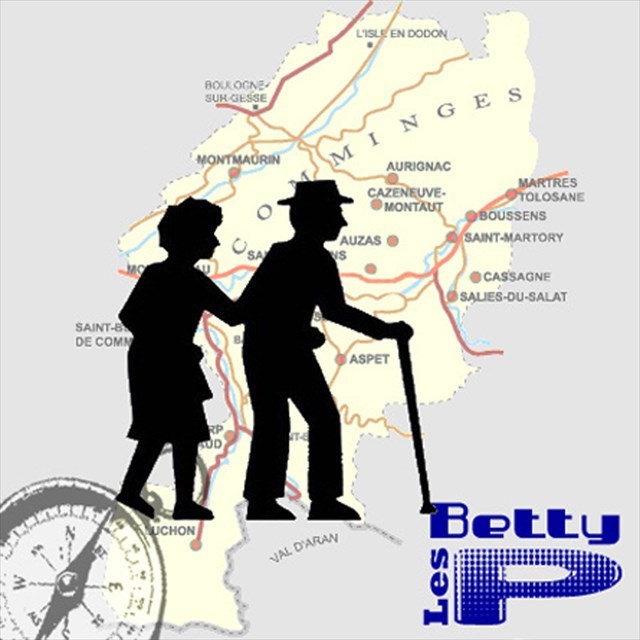Palaminy Traditional Geocache
-
Difficulty:
-

-
Terrain:
-

Size:  (micro)
(micro)
Please note Use of geocaching.com services is subject to the terms and conditions
in our disclaimer.

1
I Le Château.
Ce Château est une demeure privée en partie gratuitement ouverte au public. C'est un monument historique classé.
Elevé au XIIIe siècle par Alphonse de Poitiers à l’angle nord-ouest de la bastide de Palaminy, il contrôlait le franchissement de la Garonne et le passage de la voie de Martres à Cazères.
Le célèbre Gaston III (dit Fébus ou Phébus, Phoebus, Comte de Foix, vicomte de Béarn : 1331-1391) fut le seigneur de ce château et de Palaminy de 1349 à 1391, à la suite de son mariage avec la princesse Agnès de Navarre, nièce du Roi de France.
La façade ouest du château, percée par la Vieille Porte, témoigne des remaniements effectués par François de Tersac de Fontaines à la fin du XVIe siècle, début du XVIIe : c’est à cette époque que l’enceinte fut fortifiée.
II La cour d’honneur intérieure.
L’aspect du château vu de la cour d’honneur est empreint du style des différentes époques de construction.
La façade sud a conservé le caractère militaire défensif hérité du XIIIe siècle.
Au contraire, la façade est arbore des fenêtres à meneaux Renaissance.
Au XXe siècle, Samuel Eimar de Palaminy décida de redonner aux façades du château l’aspect Renaissance qu’elles avaient perdu au cours des différentes transformations au XVIIe et XVIIIe siècles. Il acquit des croisées en pierre sculptée du XVIe siècle dans une maison ruinée de Capens et les réutilisa en 1912 pour orner les fenêtres donnant sur la cour d’honneur.
(En 1727, Samuel Eimar fut désigné comme Capitoul de la ville de Toulouse, pour le quartier St Etienne.)
III La Chapelle Notre Dame. (XIXe - XXe siècles)
Sur le mur de cette chapelle, qui n'est plus en service, vous pourrez voir une fenêtre gothique à arcs géminés et un clocher pignon à 3 baies destinées à recevoir des cloches.
IV La maison "La Roucat".
L'élégante maison renaissance située face au château, de l' autre côté de la rue, s'appelle "La Roucat". Elle a pu servir d'hôtellerie aux pèlerins de Saint-Jacques-de-Compostelle. Elle est aussi un monument classé.
Bon Géocaching !
*****************************************************************************
An easy "park and grab" cache in the heart of Palaminy’s story.
I The Château.
Built in the thirteenth century by Alphonse de Poitiers in the northwest corner of the walled town of Palaminy, it controlled the crossing of the Garonne and the way from Martres to Cazères.
Famous Gaston III (known as Phoebus or Phoebus, Phoebus, Count of Foix, Viscount of Bearn: 1331-1391) was the lord of this Château and Palaminy from 1349 to 1391, following his marriage to Princess Agnes of Navarre, niece of the King of France.
Its western facade, pierced by the Old Gate, reflects the revisions made by Francis Tersac of Fountains at the end of the sixteenth century, early seventeenth: The wall was fortified at that time.
II The interior courtyard.
The appearance of the château seen from the courtyard is marked by the style of different periods of construction.
The south facade has retained its military defensive look inherited from the thirteenth century.
On the contrary, the eastern facade features Renaissance mullion windows.
In the twentieth century, Samuel Eimar decided to give back to the facades the Renaissance aspect that they had lost during the various transformations in the seventeenth and eighteenth centuries. He bought carved stone windows dating from the sixteenth century from a derelict house in Capens and reused them in 1912 to decorate the windows overlooking the courtyard.
III Notre Dame Chapel. (XIX - XX centuries)
On the wall of the chapel, which is no longer in use, you will see a twin arched Gothic window and a 3-bay gable belltower.
IV "La Roucat" House.
The elegant Renaissance house located opposite the castle, on the other side of the street, is called "La Roucat”. It supposedly served as an inn for Saint Jacques de Compostela pilgrims. It is also a monument.
Happy Geocaching!

Additional Hints
(Decrypt)
Nh obeq q'ha gebh qh zhe.
Ng gur rqtr bs n ubyr va gur jnyy.